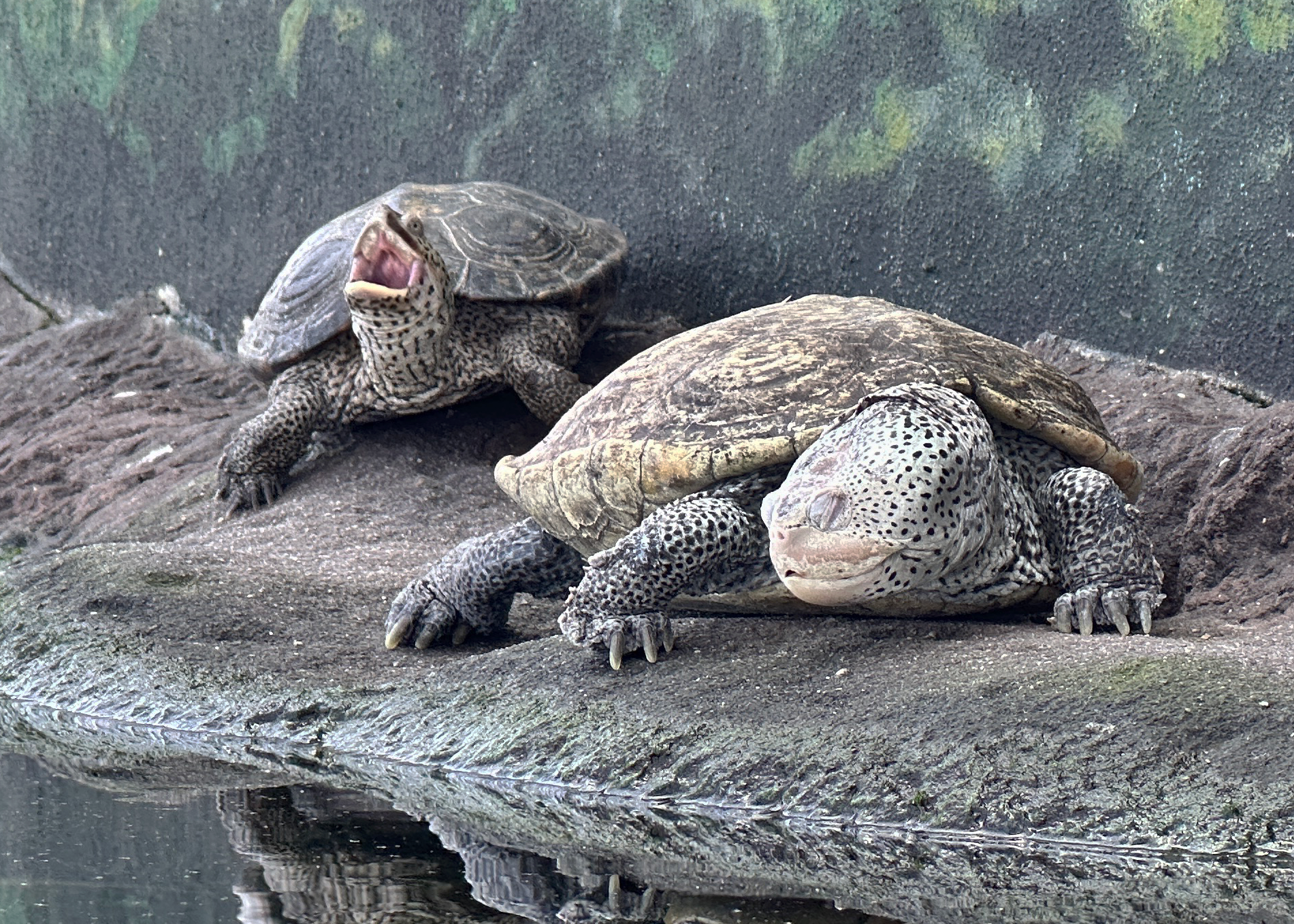Get out your magnifying glass, don your Sherlock cap and get ready to put those observation skills to the test! It’s time to take a closer look at some of the more mysterious animals here at the Aquarium that may take a moment to spot. So keep an eye out — blink and you’ll miss them!
This One’s REELy Hard to Spot
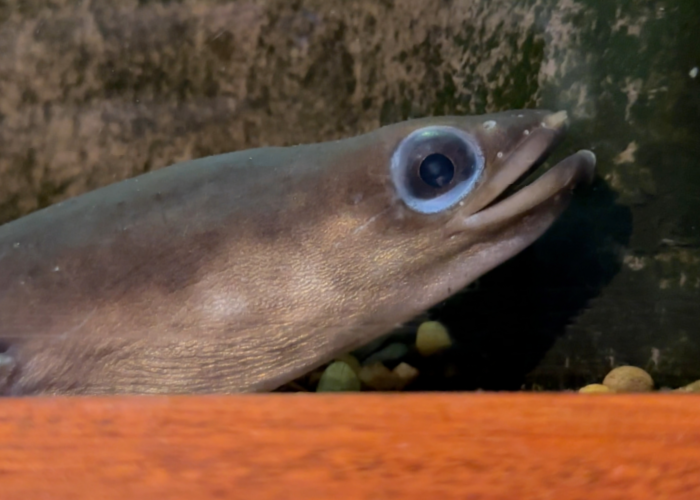
Directly across from the Trading Post sits our Swamp Snakes exhibit. You’ve likely taken a few moments to peek in, seeing a snake or two and our resident chicken turtle. You may have even seen a sign for the American eel that lies within, but have you actually seen the eel? This eel is small and brown, which makes their camouflage skills in this exhibit top notch, but they also have a very specific hiding spot. Look closer at the pebbles on the bottom of the tank. You’ll likely see a mouth and eyes poking out! Hint: if you don’t see the eel at first, check the surface of the pebbles for movement — you’ll be able to spot just their mouth as they breathe!
Dwayne “The Rock” Turtle?
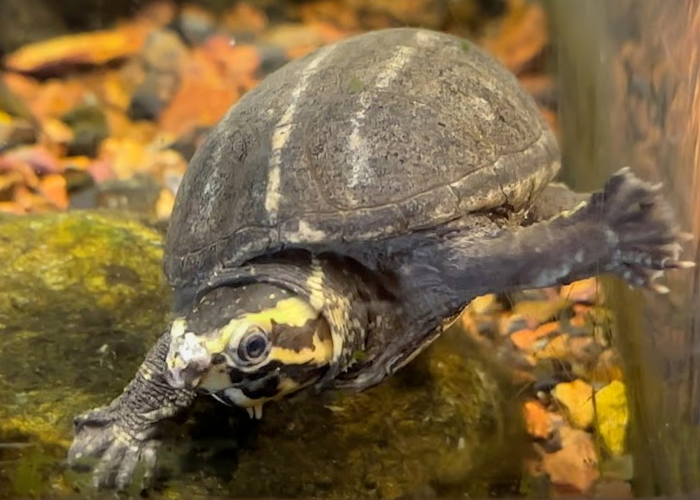
Okay, okay, not THE Rock… but did you know we have a striped mud turtle named Dwayne? You may have glimpsed him before and didn’t realize it because his carapace looks like, well, a rock! Dwayne resides in the Pond exhibit, right across from our American alligators. This small, square tank houses several tiny fish and some beautiful green plant life floating on the surface. Take a close look around every side of the tank to see if you can spot a grayish brown oval with three faint stripes — that’s him! If you’re lucky, you may get to see this tiny turtle perched in the log of the tank, showing off his adorable face (but not flexing his muscles).
Calling Prince Charming!

We’ve found some magical slippers… slipper lobsters that is! As you walk through the Coast gallery on the second floor, pay close attention to the tank between the schooling fish and the spiny lobsters. At first glance, you’ll notice a small window into a world of juvenile spadefish and artificial reef cones. As you get closer, be sure to look in the cones, and you’ll discover some magnificent slipper lobsters! Because they lack claws, these curious-looking crustaceans aren’t true lobsters, but they do feature antennae and interesting mixes of color on their carapace.
Golden Girls Never Go Out of Style
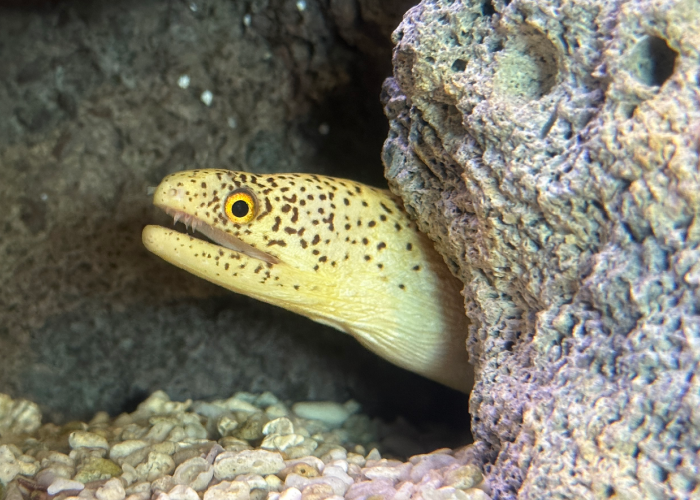
“The older you get, the better you get, unless you’re a banana,” says Rose of “The Golden Girls,” but don’t tell that to our own Betty White: a goldentail moray, aka banana eel! You’ll find Betty in a tank next to the invertebrate Touch Tank. Keep your eyes peeled (pun intended), as she likes to nestle behind the rock. Plus, take a moment to watch a super cool adaptation; eels do not have gills, so they open and close their mouths to breathe!
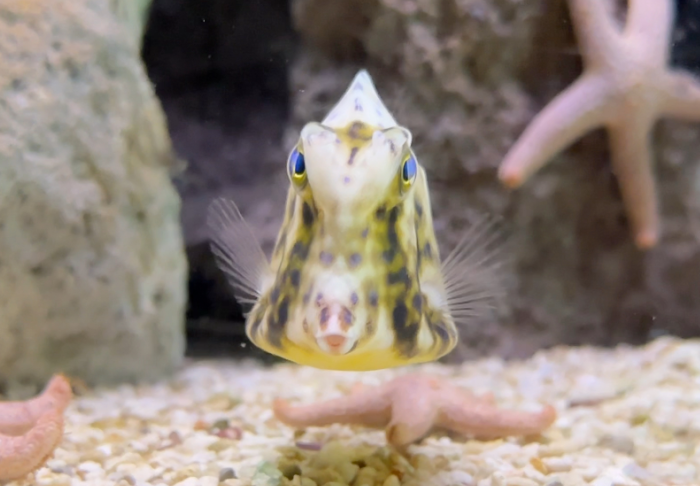
In addition, this tank is home to an Aquarium newcomer, a scrawled cowfish! This little fish is also golden in color and is sure to make you smile with their cute face and unique body shape. The name cowfish comes from the unexpected horn-like structures above their eyes! Be sure to make this tiny tank a stop on your next journey through the Aquarium.
Diamonds in the Rough
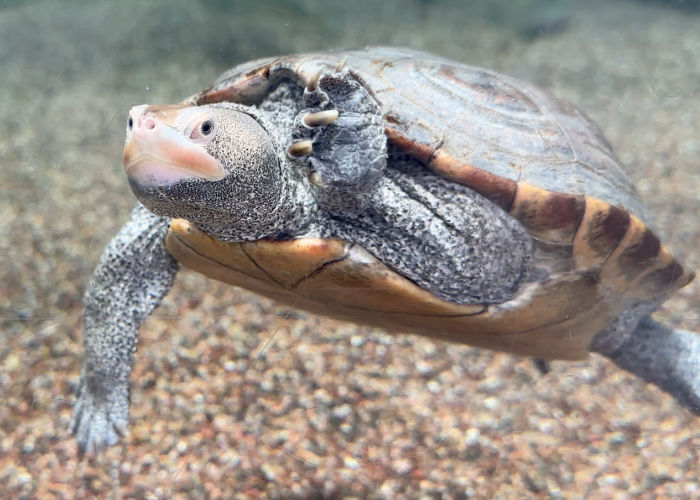
You probably know many of the creatures of our Saltmarsh Aviary well. You can easily spot the bright pink feathers of our roseate spoonbills, hear the calls of our seagull and see the lovable, otherworldly faces of burrfish in the tanks. But have you spotted our diamondback terrapins? These four lovely ladies reside in the large central tank of the exhibit. On warm sunny days, you can find them laying near the mural wall and taking in the rays, but if you’re visiting on an overcast day (or during nap time), take a look at the corners of the tank. The terrapins like to take a snooze right up against the wall in the front corners! When you see these turtles, take a look at the distinctive wavy-black markings on their skin — no two terrapins are alike!
We’re Not Being SARGASStic
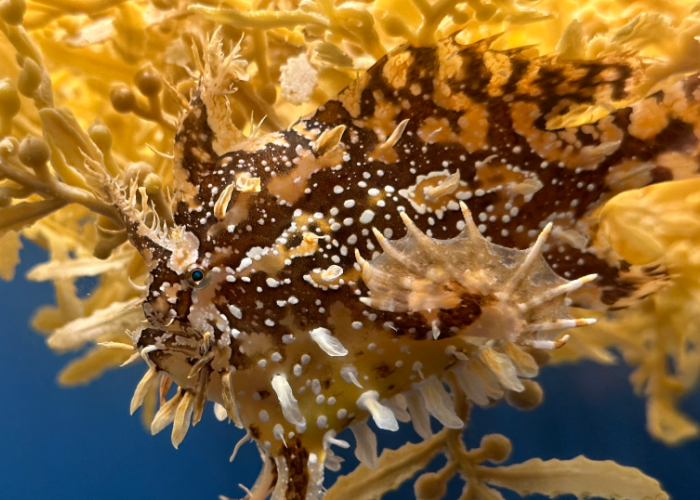
On the second floor of our Ocean gallery, you’ll perceive a small tank with yellow-colored seaweed floating at the top. Examine it a little closer, and you’ll find our sargassum fish! This name comes from the sargassum seaweed they reside in. (You might notice they’re “clinging” to the seaweed with their prehensile pectoral fins, similar to seahorses!) Their scientific name, Histrio histrio, comes from the Latin word for “stage actor” — and they certainly act the part, with their frilly appendages and color-changing abilities. If you happen to spot this fish while their back is toward you, you’ll notice gill openings near the base of their pectoral fins. Sargassum fish can force water through these openings to dart at prey, putting on a show for any creatures around!
And there you have it… mystery solved! Next time you’re exploring the Aquarium, take a few extra minutes to examine all the exhibits to see if you can spot inconspicuous critters you haven’t seen before.
Published June 1, 2023


